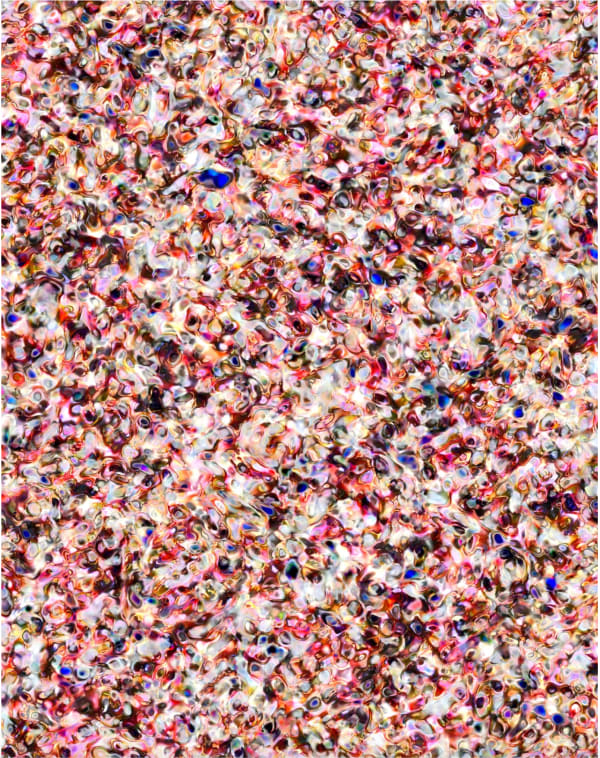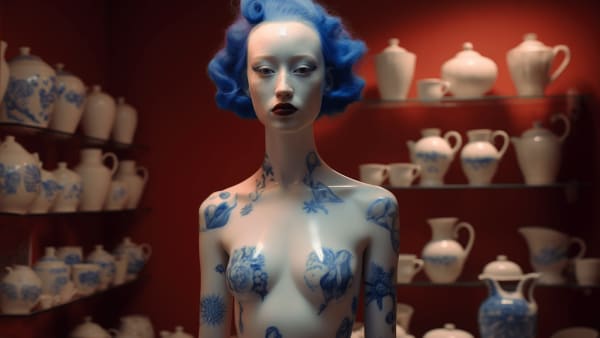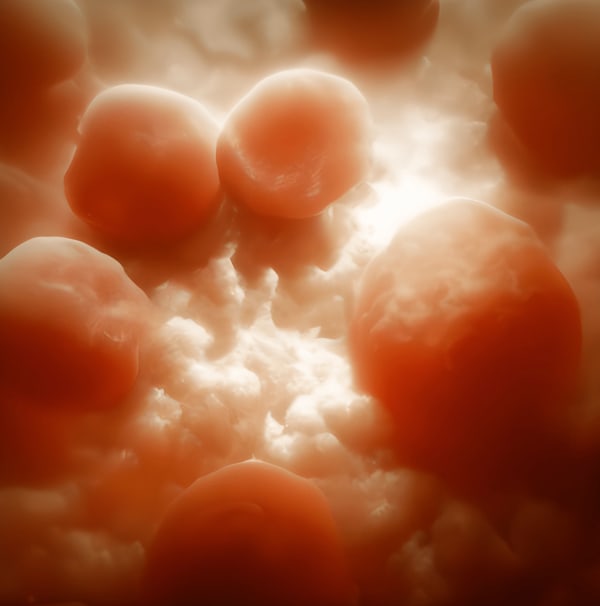Agoria
-
 AgoriaCompend-AI, 2025Biological Generative NFT - MP4
AgoriaCompend-AI, 2025Biological Generative NFT - MP4
I look for the immanence of the living into the code, especially in the {Compend-AI} series. The difficult part was to capture a human generative process that couldn’t be questioned. For a year I traveled capturing human gesture repetitions, in order to build my own precise database. It has been a long and exciting walk where the poster maker appears as evidence. I followed them a lot and I captured all remnants on the walls everywhere in the world, my DJ tour helped a lot here! It’s one of the most incredible human generative processes. First, it questions the culture we are constantly sold, close to Jacques Villegle or Raymond Heins works. Second, the remnants on the walls are the perfect results of the equation. The perfect iterations of our Biological Generative life.
Once I've built the most personal dataset, the second part was to look for patterns or similarities with the Living. My friend Johan Lescure has then been essential here. We tricked the algorithms to reveal what the eye couldn't see inside those data materials. Insanely, we are revealing forms and patterns really close to the living.9216 x 12288 pixels
110mo -
 Agoria{Σ Lumina} - The Convergence of Breath #7, 2024170 x 65 x 25 cm
Agoria{Σ Lumina} - The Convergence of Breath #7, 2024170 x 65 x 25 cm
32 x 32 in
Not for sale, accepting enquires for other works.
The 19th century witnessed the birth of modernity and a wave of bold artistic experimentation. One of the most significant confrontations to emerge during this time was Impressionism.
In that spirit, the Musée d’Orsay seeks to explore the connection between its historical collections and the emergence of new experimental art. As part of this initiative, titled Le Code d’Orsay, Agoria presents two works that resonate deeply with the museum’s legacy: the first, Σ Lumina, a highly poetic and immersive installation; and the second, Interprétation par saccharomyces cerevisiae de L’Atelier du peintre de Gustave Courbet, a piece that intimately bridges the realms of art and science.
The concept behind Σ Lumina is rooted in the creation of a poetic and participatory time portal—a bridge between the physical and digital, the past and the future. Inspired by the architectural presence and emotional weight of the Musée d’Orsay, the work aims to demystify digital art by inviting viewers into a personal, sensory experience of light, breath, and code. Activated by a simple, universal gesture—blowing into one’s phone—each visitor becomes a co-creator, generating a unique digital artwork derived from the museum’s collection of Impressionist masterpieces.
The title, meaning “Sum of Lights,” reflects the convergence of worlds: where organic gestures meet algorithmic systems, and classical art intersects with living technology. Created in collaboration with cabinetmaker Guilhem Huynh, and the artist Johan Lescure, Σ Lumina takes form as a monumental living sculpture, made with steel, and sets a new standard for exhibiting digital art. Σ Lumina has been selected by Emmanuel Macron as a reference to represent art and technology during the AI Summit held in Paris in February 2025.
Saccharomyces cerevisiae’s interpretation of Gustave Courbet’s L’Atelier du peintre extends this exploration of hybridity and memory. Developed with a team of scientists, the work uses yeast (Saccharomyces cerevisiae) cultivated in a bioreactor, with its life cycle influenced by key historical events from Gustave Courbet’s life. This living data was then used to animate and reinterpret Courbet’s “L’Atelier du peintre”, turning the iconic painting into a generative, biological artwork. It questions ideas of conservation, transmission, and how artworks—and the histories they carry—can continue to evolve. In essence, the microorganisms become the artists, drawing their own version of Courbet’s world.
Both works reflect a curatorial vision rooted in blending disciplines: art and science, code and biology, personal memory and collective heritage. They challenge static perceptions of digital art and invite the audience into an intimate, interactive space—where blowing into a phone or observing living data becomes an act of creation. These works are tributes to the past, reinterpretations for the present, and speculative bridges to the future.
Live demo: https://o.agoria.dev/en -

-

-

-

-

-

-

-

-

-

-

-

-

-

-

-

-

-

-

-

-

-

-

-

-

-

-

-

-

-

-

-

-

-

-

-
 AgoriaUntitled, 2023Biological Generative NFT - MP4
AgoriaUntitled, 2023Biological Generative NFT - MP4
Agoria’s works capture the infinite, mysterious, and galaxy-like inner workings of brain cells. Created in collaboration with biologist Alice Meunier, a researcher with IBENS, CNRS, the moving images of centrioles—organelles in the cytoplasm near the nucleus of a cell—appear like dancing stars in space. -
 AgoriaCompend-AI-XI, 2023Biological Generative NFT - MP4
AgoriaCompend-AI-XI, 2023Biological Generative NFT - MP4
Agoria’s works capture the infinite, mysterious, and galaxy-like inner workings of brain cells. Created in collaboration with biologist Alice Meunier, a researcher with IBENS, CNRS, the moving images of centrioles—organelles in the cytoplasm near the nucleus of a cell—appear like dancing stars in space.
"I look for the immanence of the living into the code, especially in the {Compend-AI} series. The difficult part was to capture a human generative process that couldn’t be questioned. For a year I traveled capturing human gesture repetitions, in order to build my own precise database. It has been a long and exciting walk where the poster maker appears as evidence. I followed them a lot and I captured all remnants on the walls everywhere in the world, my DJ tour helped a lot here! It’s one of the most incredible human generative processes. First, it questions the culture we are constantly sold, close to Jacques Villegle or Raymond Heins works. Second, the remnants on the walls are the perfect results of the equation. The perfect iterations of our Biological Generative life.
Once I've built the most personal dataset, the second part was to look for patterns or similarities with the Living. My friend Johan Lescure has then been essential here. We tricked the algorithms to reveal what the eye couldn't see inside those data materials. Insanely, we are revealing forms and patterns really close to the living."







































